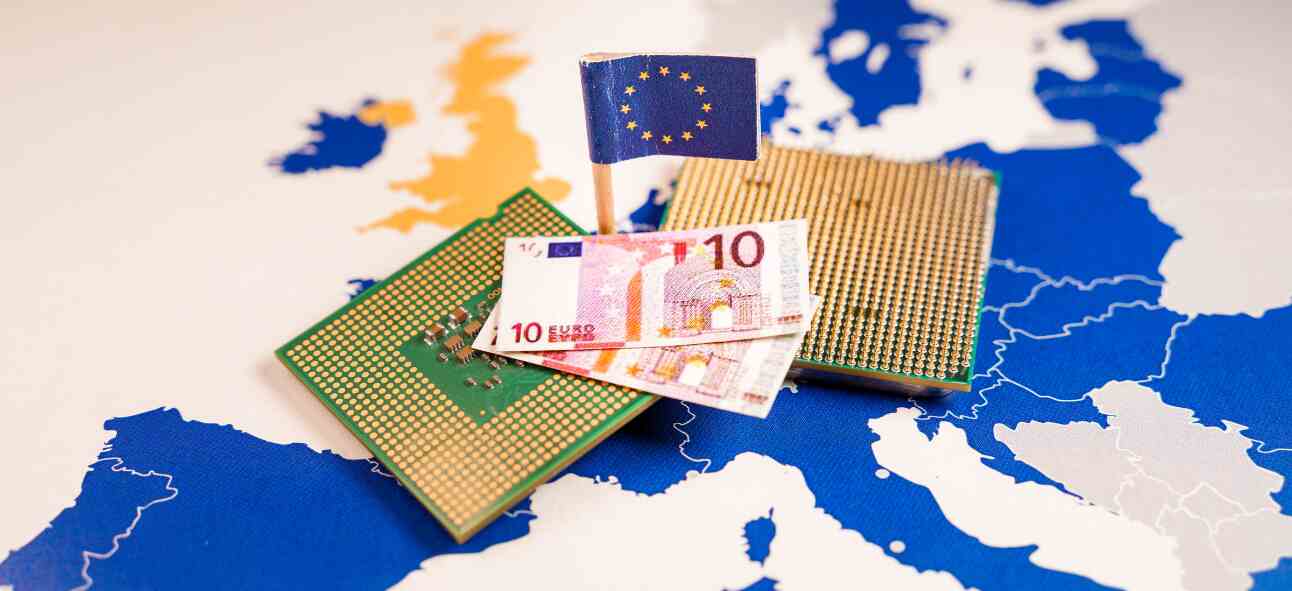The European Commission, in June this year, introduced new draft legislation on the digital euro. If things roll as planned, it could come into effect by 2026. But it is only by this year’s end that we will know for sure if it will be issued or not.
So, what is the Digital Euro?
The digital euro is the digital version of the euro. It would exist alongside the euro as an additional form of online or electronic payment. It will be used just like the cash euro – for making peer-to-peer as well as retail payments. It will not replace the cash euro, but only complement it, thus offering users more choice to pay digitally.
The digital euro can be used by anyone in the euro area. But it will be different from “private money” in the sense that you cannot convert it into physical cash. Users will most likely be able to buy them from their existing banks and hold them in a separate account.
You can use digital euros for both online and offline payments, either through a card or a mobile wallet app on your phone.
Why is it Necessary?
The ECB has outlined several reasons for the introduction of the digital euro.
- Create a central bank-issued digital currency that is secure and easy to use – the digital euro can be used by anyone, free of charge, across the euro area, which will help to bring in greater financial inclusion.
- Bring stability to the payment and monetary systems of Europe and strengthen our monetary sovereignty. The digital euro will take on growing competition from stablecoins, which are crypto-assets linked to other currencies, as well as other digital currencies.
- Spur innovation in Europe’s financial sector and make it easier for banks and financial players in Europe to compete with large, non-European financial and technology firms.
Will it replace cash?
The digital euro will only complement the physical euro, not replace it. Most people in Europe still prefer using cash to make small-value payments, as the data shows. The European Commission and the ECB have said that cash will remain fully accepted and available throughout the countries in the euro area.
How will it impact business and consumers?
Wide availability and low-cost
The digital euro will be available across the entire euro area and consumers will be able to use it to pay easily and free of charge.
Users will be able to access it through their banks, and store them in digital wallets. However, there would be a limit as to how much one could keep – ECB officials have suggested a cap of €3,000. This would “protect financial stability and avoid any substantial outflows from banks,” as the ECB says.
On the other hand, merchants in the EU that accept digital payments, will be required to accept the digital euro. However, fees for merchants who accept them will be kept as low as possible.
High levels of privacy – just like cash
Privacy protection is a core feature of the digital euro. As such, the ECB or any other bank will not be able to see, store or track users’ payment data and payment patterns. No user data will be shared with government agencies or other public institutions. Offline payments would offer similar levels of privacy as cash. Users can make payments without sharing their data with third parties, except as is required by EU law to prevent illegal activities.
Lower payment-related fees for consumers and merchants
A digital euro would bring more choice and thus spur competition in the European payments sector, which would reduce payment-related fees for consumers and merchants. Right now, two-thirds of Europe’s digital retail payments are processed by a few global companies. More competition will mean cheaper services for all.
When is the digital euro launching?
Though the European Commission has presented the draft legislation, the final law on it must be backed by all EU member states. The investigation phase on the digital euro’s design and distribution, which commenced in October 2021, is expected to be done by October 2023. Only then will the EC decide whether to start the process of actually developing it. If all goes well, we could look at seeing them out by 2026 or 2027.
You can read more about it here.

Antony Robinson is an experienced IT expert, information architect and a customer experience evangelist. He has over 30 years of experience in web technologies, user experience, media, and marketing. Antony is currently the CMO of Novalnet AG, a fintech company in Germany. As CMO, he leads the company’s marketing strategy and fosters collaborations. Antony’s expertise and dedication to technology and innovation make him a valuable leader in his field.










